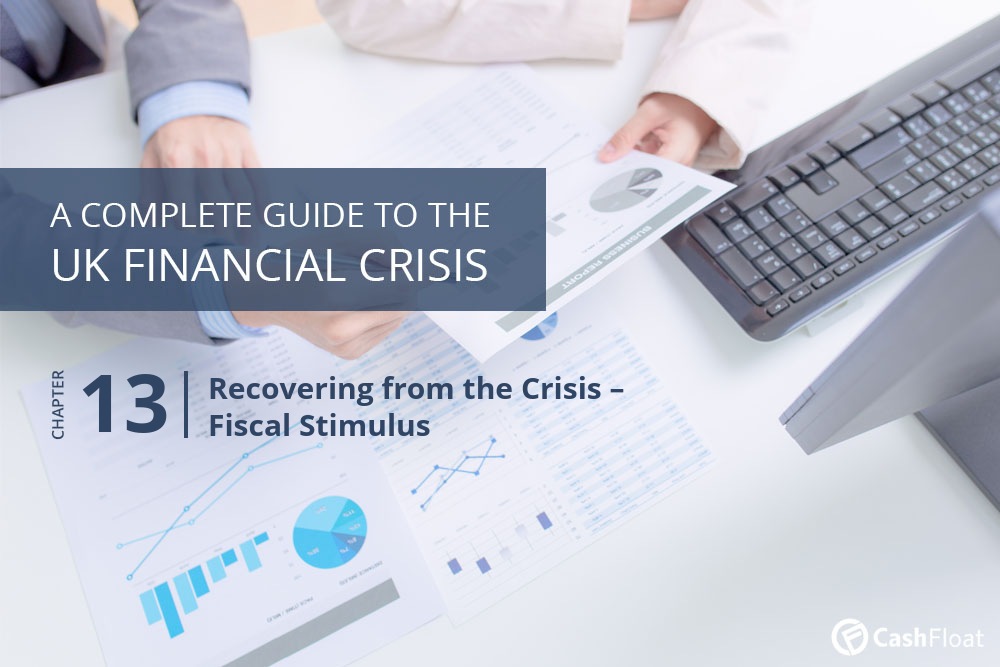The government introduced several fiscal stimulus packages designed to stop the UK economy from imploding. Cashfloat analyzes these packages and their effects.

Story Highlights
- The objects of the fiscal stimulus plan were to create jobs, reduce poverty, lower deficits and achieve higher growth.
- The UK government also set aside £75 million in the Capital For Enterprise Scheme.
The Fiscal Stimulus Packages
The government took a multifaceted approach to fight back against the effects of the 2007/2008 financial crisis. One of the measures included a series of fiscal stimulus packages designed to stop the UK economy from imploding. After the series of bank bailouts in October 2008, the governments of the G7 countries met to try to prevent a global recession. The resulting plan followed the UK’s lead by directly investing in the banking system.
The plans included a series of decisions designed to protect savers in both private and public capacities. They also planned to unfreeze money markets and to try to stimulate the economy by lowering interest rates. Following this series of actions, the UK government instituted additional fiscal stimulus measures for the UK economy. These stimuli at achieving a sustainable recovery.
What Was the Reason for Fiscal Stimulus Packages?
The fiscal stimulus plan aimed to create jobs, reduce poverty, lower deficits and to achieve higher growth. To achieve these objects, the government needed to increase demand for both services and products. They initially wanted to do this by investing in public services. However, many households were suffering from serious debt problems and redundancies, which meant less revenue for the government from taxes. With such limited resources, it would prove difficult to invest in public services.

Government Guaranteed Loans
By January 2009 the UK government revealed a plan to guarantee loans to small and medium-sized businesses with an initial sum of £20 billion. The fiscal stimulus program included insurance for banks against a default on the loan repayments. Although many ministers wanted a more substantial amount, the country felt that at least this was a positive start towards economic recovery.
Another aspect of the plan was the £10 billion working capital scheme. The government would guarantee 50% of the sum lent to each business with a turnover of £500 million. Negotiations between the banks and the government ensued about the amount of available capital. The idea was that new businesses, which would be crucial to the recovery of the UK economy, would be able to get access to funds. The government had also set aside a sum to cover any repayments that were at risk.
The Enterprise Guarantee Scheme
The government also rolled out the Enterprise Guarantee Scheme which provided £1.3 billion in loans to companies with a turnover up to £25 million. These funds were for smaller businesses that had been hit hard by the downturn in the economy, allowing them to borrow up to £1 million. The government would guarantee 75% of the sum. The funds were available to use as working capital or to pay salaries to keep companies running. The only caveat was that the banks had to provide these loans in addition to any other loans they would lend.
In addition, the UK government set aside £75 million in the Capital For Enterprise Scheme. They designed this scheme for companies with very debt high levels who were unable to access any other kind of credit. The government provided two-thirds of the funds, and the big banks donated one third. Businesses in the UK were cash-strapped, and it was vital to the economy to revive business credit and lending.

Criticism of the Scheme
Many critics of the scheme felt that the sums involved were insufficient to kick-start growth in the economy. They believed the government needed to set aside a larger amount to help businesses. The Institute of Economic and Social Research was very vocal in its criticism. They stated that the fund was an inadequate half measure that would need boosting in the coming months. The Shadow Chancellor at the time was also openly critical. He deemed the fiscal stimulus package a half measure that could end up achieving nothing.
The British Bankers Association had released data showing a downturn in growth by November 2008 for small and medium-sized businesses. They attributed this to a lack of finance and governmental support. Nevertheless, people generally welcomed the measures as a positive move to steer the economy out of a full-blown recession.
Fiscal Impact
Although the UK government took some steps to mitigate the effect of the financial crisis on both large and small companies, there has been a price to pay in subsequent years. Starting with the £50 billion used in 2008/2009, the cost to the Exchequer has been around 3.5% of national income. As the UK has exited the worst of the credit crunch, the government loans which increased the national debt now must be repaid. Between the significant spending on stimulus schemes and waiting for loan repayments, government spending has slowed drastically. This has a direct impact on public services.

Public sector debt is now around 21% higher than it was before the financial crisis. However, it was not entirely a direct result of the fiscal stimulus package. Factors such as weaker productivity and growth and poorer asset markets are also to blame for the large amount of public debt. Experts estimated that a squeeze in spending would have to continue until well into the 2030s.
Summary of Fiscal Stimulus
So, it would appear that although the UK has been more successful than some other countries in repairing the economy, there will be another type of credit crunch in the offing. For instance, cuts to public sector services and a hold on public sector wages are the reality of the post-crisis and stimulus package economy.
Even with tightened fiscal measures, the public sector debt is likely to stay above the stated target for at least another two decades. If there is enough confidence in the current government’s methods to reduce the debt, there will not be a problem, although it will take many years for the amount to reach a sustainable level. However, if investors feel that the government is not making sufficient progress, there could be a rise in the cost of borrowing and higher interest rates. This higher cost of credit would directly impact both businesses and domestic households. In this worst-case scenario the new fiscal measures needed would make today’s cuts look minimal.



